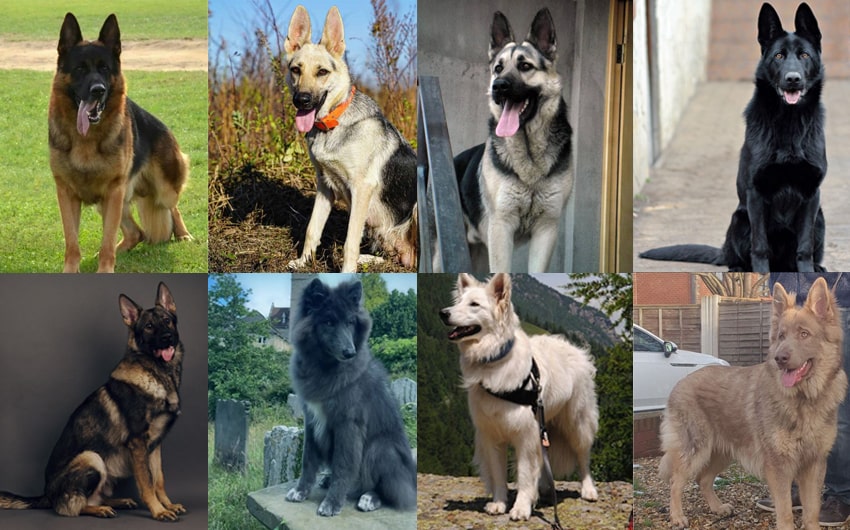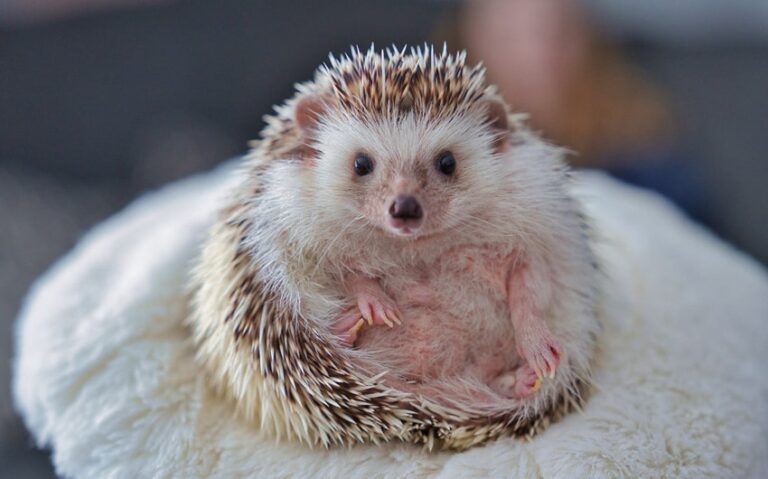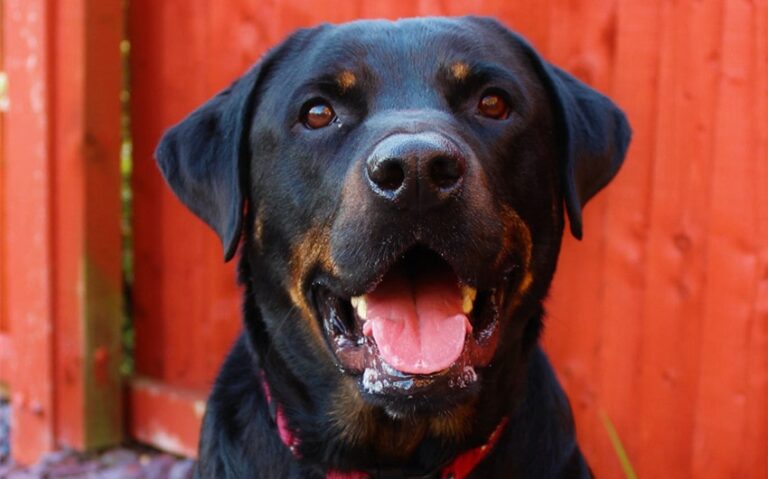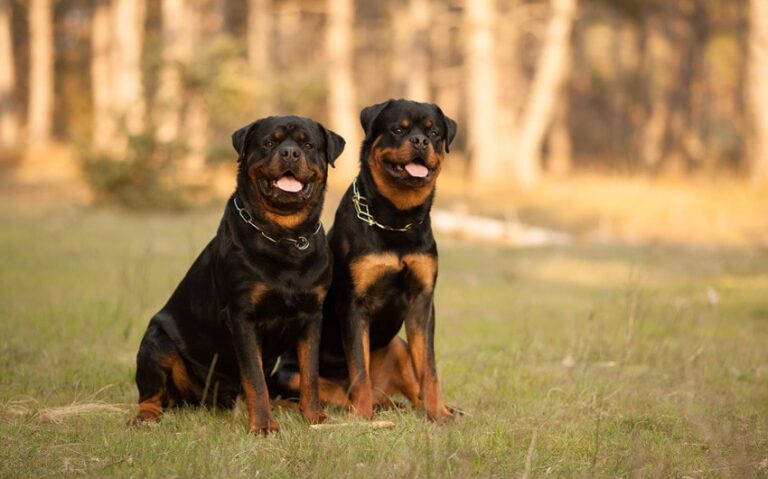11 Stunning German Shepherd Colors You Need to Know About
German Shepherds are one of the most beloved dog breeds, known for their loyalty, intelligence, and striking looks. But did you know these amazing dogs come in a variety of colors that add to their unique appeal? From the classic black and tan to rare shades like blue and sable, German Shepherd colors offer something for everyone.
Whether you’re drawn to a traditional look or something a bit more unusual, understanding these color variations can help you appreciate this breed even more—and maybe even find your perfect furry friend.
Standard Colors of German Shepherds
German Shepherds come in a range of beautiful colors, with some being more common and widely recognized. These standard colors are often seen in show rings and are part of what makes German Shepherds so iconic. Here’s a closer look at the most popular standard colors:
1. Black and Tan:
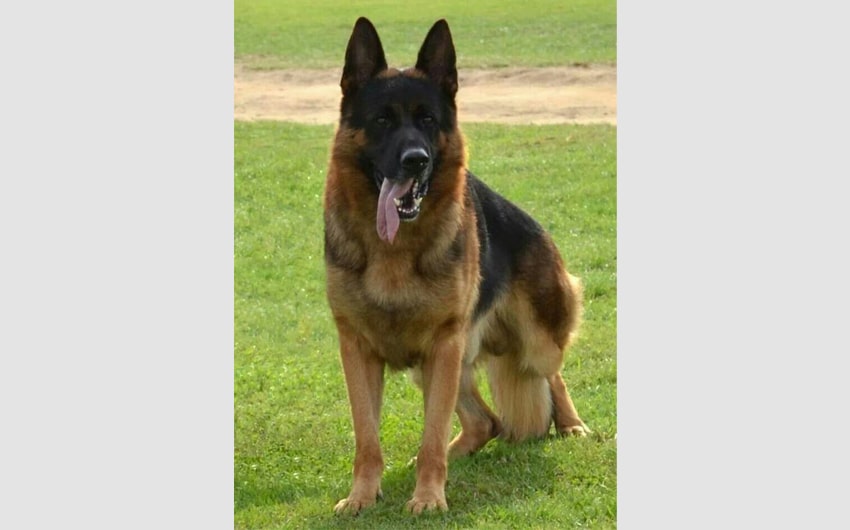
Image Source: Pinterest
The black and tan German Shepherd is the classic look most people picture when they think of the breed. This color pattern features a black “saddle” across the back and tan markings on the chest, legs, and face. The tan can vary from light to deep, rich shades, giving each dog its unique flair. Black and tan German Shepherds are not just beautiful; their markings also highlight their strong, athletic build. This color is the most common and widely accepted in breed standards, making them a favorite in dog shows. If you’re looking for the quintessential German Shepherd look, black and tan is the way to go.
2. Black and Red:
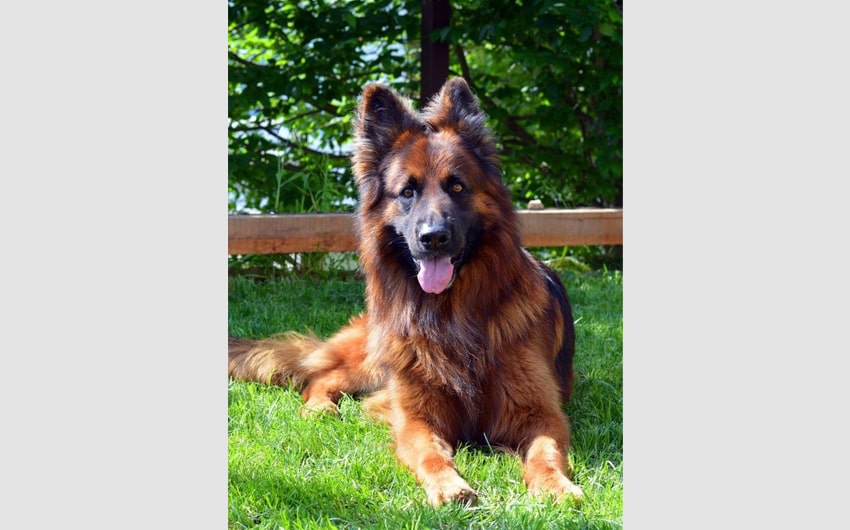
Image Source: Pinterest
Black and red German Shepherds are similar to the black and tan, but with a richer, deeper red instead of tan. This color is particularly popular in German show lines, where breeders favor the more vibrant and striking contrast. The red hues can range from rusty tones to deep mahogany, giving these dogs an elegant, distinguished appearance. These colors are often seen in working and show dogs, enhancing their strong, regal presence. Owning a black and red German Shepherd often feels like having a piece of the breed’s most refined lineage.
3. Black and Cream:
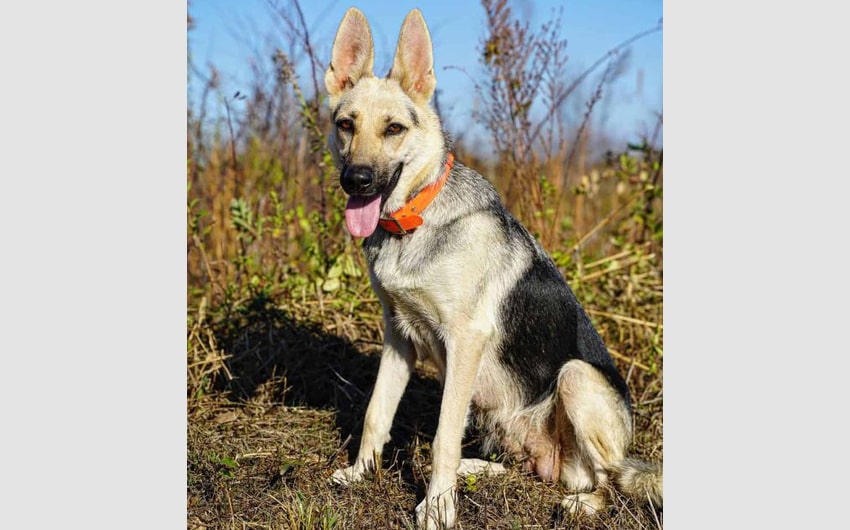
Image Source: Pinterest
For a lighter touch, the black and cream German Shepherd offers a softer, more subdued version of the classic look. The cream color can appear almost white in some cases, making the dark black areas stand out even more.
While not as commonly seen as black and tan, black and cream shepherds are a beautiful variation that still maintains the breed’s signature markings. This color combination is great if you prefer a German Shepherd with a more subtle appearance but still want that traditional look. Black and cream Shepherds are often sought after by those looking for a unique yet recognizable companion.
4. Black and Silver:
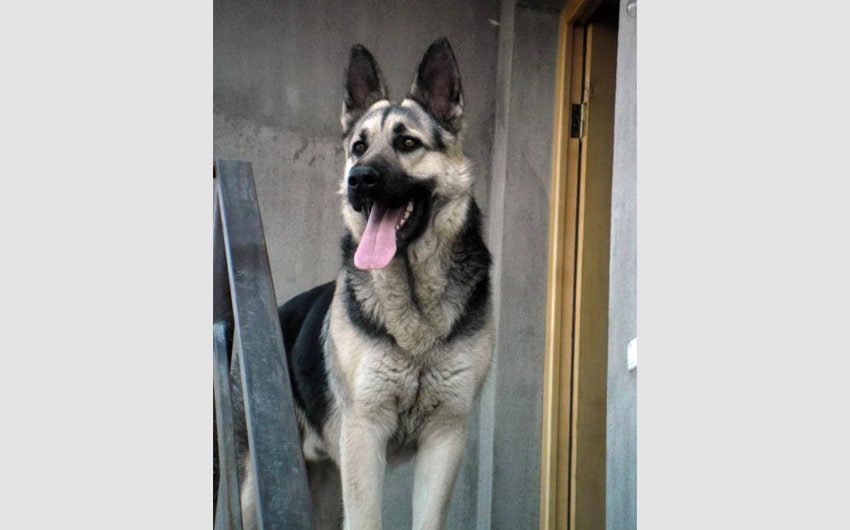
Image Source: Pinterest
The black and silver German Shepherd has a striking appearance thanks to the silver tones that replace the typical tan or red. This color combination gives the dog an almost metallic, sleek look, making them stand out among other color variations. Black and silver German Shepherds have the same markings as their black and tan counterparts but with a unique, eye-catching twist. Their dramatic appearance is favored by those who want a dog with a standout, show-stopping look. Although they are not as common, they are still cherished by enthusiasts for their distinctive and bold color pattern.
Rare Colors of German Shepherds
Beyond the common color patterns, some German Shepherds come in rare and unique shades that set them apart. These colors are often less seen and can make a dog particularly eye-catching. While some rare colors are not accepted in breed standards for showing, they are still loved by enthusiasts for their beauty and distinctiveness. Here’s a closer look at some of the rare colors of German Shepherds:
5. Solid Black:
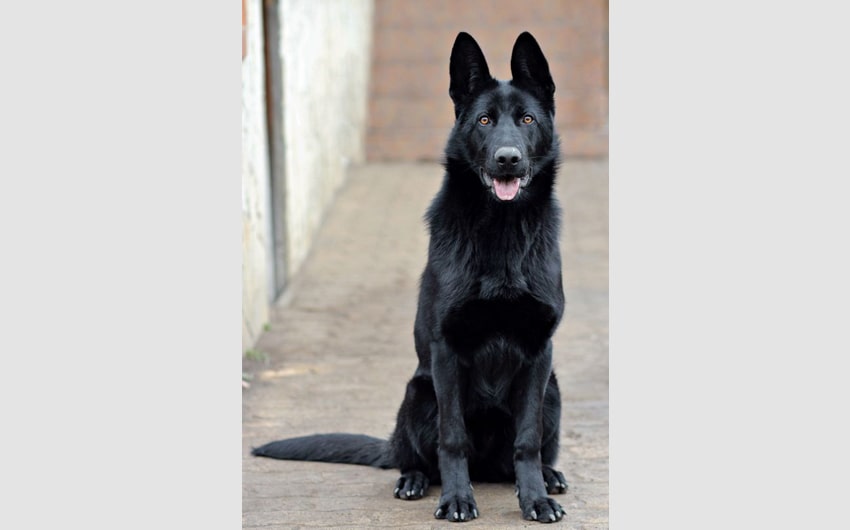
Image Source: Pinterest
A solid black German Shepherd is a stunning sight, with a glossy coat that showcases their muscular build and striking presence. Unlike the more common black and tan, solid black German Shepherds lack the contrasting saddle markings, giving them a sleek and uniform appearance. This color is often associated with working lines, as it gives the dog a powerful, authoritative look.
Solid black Shepherds are rare, making them highly sought after by those looking for a unique version of the breed. Despite their intimidating appearance, they have the same loyal and loving temperament as their multicolored counterparts.
6. Sable:
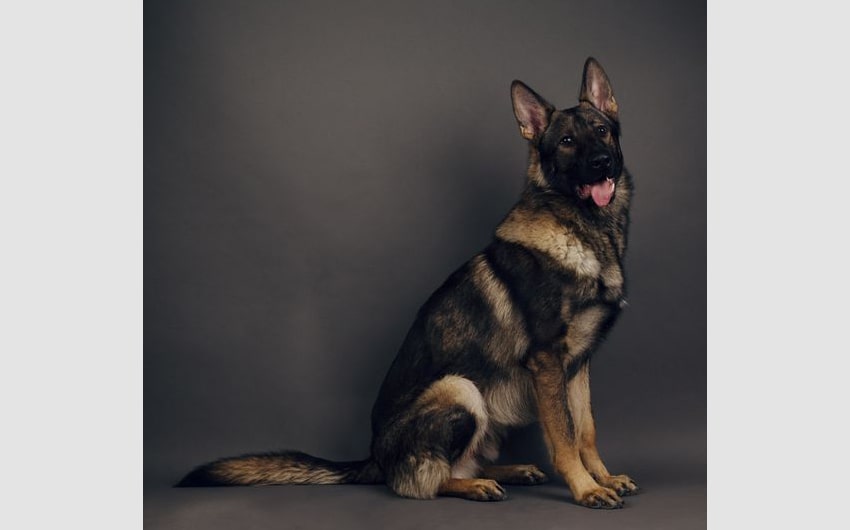
Image Source: Pinterest
Sable German Shepherds are truly unique, with each hair being banded in multiple colors, such as black, brown, gray, or gold, creating a dynamic and ever-changing coat. This color gives them a wild, wolf-like appearance, and no two sable German Shepherds look exactly alike.
Sable is one of the original color patterns of the breed, and it’s still highly prized in working lines for its rugged, natural look. Sable German Shepherds often appear darker as they age, and their color can shift over time, adding to their mystique and appeal. This color variation is a favorite among those who appreciate the breed’s history and natural beauty.
7. Blue:

Image Source: Pinterest
The blue German Shepherd is a rare and striking variation that appears as a diluted black, giving the dog a steel-gray or bluish appearance. This color occurs due to a recessive gene that dilutes the standard black pigment, creating a soft, muted look that’s both unique and beautiful. While blue German Shepherds are not accepted in conformation shows, they are cherished as companion animals for their striking and unusual coloring. Their blue coat can range from a light, silvery gray to a deeper slate blue, and this color can be paired with various patterns, including solid or sable.
8. Liver:

Image Source: Pinterest
Liver-colored German Shepherds have a rich, reddish-brown coat that sets them apart from the more common black-based colors. This color is due to a recessive gene that affects the pigmentation, giving the dog a distinct chocolatey hue that’s not often seen. Liver German Shepherds can have lighter noses and paw pads, matching their coat color, which adds to their unique appearance.
Although not recognized in many breed standards, the liver color is adored by owners who want a German Shepherd that’s truly one-of-a-kind. These dogs often turn heads with their warm, earthy tones and distinctive look.
Unique and Uncommon Colors of German Shepherds
Beyond the standard and rare colors, some German Shepherds possess unique and uncommon color patterns that make them truly stand out. These colors are often the result of specific genetic mutations or rare combinations that are not seen frequently in the breed. While not always recognized by major kennel clubs, these unique colors add an extra layer of intrigue to the German Shepherd’s already impressive appearance. Here’s a look at some of the most unique and uncommon German Shepherd colors:
9. Panda:

Image Source: Pinterest
The Panda German Shepherd is a rare and eye-catching variation with a striking tri-color pattern that includes large patches of white, along with black and tan markings. This unusual color pattern is the result of a spontaneous genetic mutation, not crossbreeding with other dogs, making the Panda German Shepherd entirely unique within the breed. The white markings typically cover about a third of the dog’s body, including the chest, belly, and sometimes the face, creating a look that resembles a panda bear—hence the name.
Panda German Shepherds are not recognized by major kennel clubs, but their distinctive appearance and the fact that they are purebred make them a fascinating option for enthusiasts who want something truly different.
10. White:

Image Source: Pinterest
White German Shepherds are as stunning as they are rare, with a pure white coat that gives them an elegant and almost ethereal appearance. While white Shepherds have the same characteristics and temperament as any other German Shepherd, their color is often misunderstood as being related to albinism, which it is not.
The white coat is simply a recessive trait that masks the standard colors. Although white German Shepherds are not accepted in conformation shows by some kennel clubs, they are cherished as companions and working dogs. Their striking appearance can make them resemble arctic wolves, and they are often adored for their noble and graceful looks.
11. Isabella (Lilac):
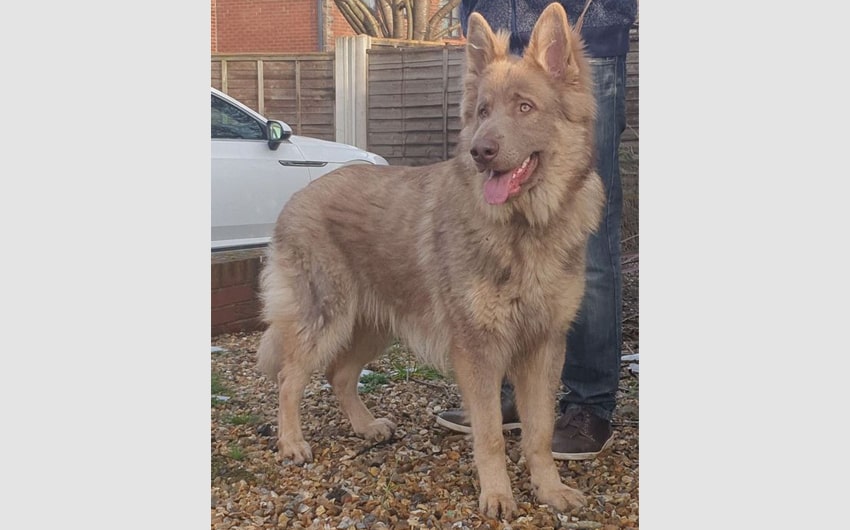
Image Source: Pinterest
The Isabella, or lilac German Shepherd, is one of the rarest colors seen in the breed, resulting from the combination of both blue and liver dilute genes. This unique shade produces a soft, almost pastel-like appearance, blending a pale brownish-pink with light silvery blue, creating a stunning and unusual look. Isabella German Shepherds have light-colored noses, paw pads, and eye rims, complementing their coat and giving them a soft, muted appearance that stands out among other German Shepherds.
Due to their rarity, Isabella Shepherds are highly prized and can be difficult to find, but their beautiful and unique color makes them a treasure for those lucky enough to own one.
How Genetics Affect German Shepherd Colors
The wide variety of German Shepherd colors is largely determined by genetics, which control the pigments in a dog’s coat. These genetic factors include dominant and recessive genes that interact in complex ways, producing the diverse color patterns we see. Two primary pigments, eumelanin (black) and pheomelanin (red/yellow), are responsible for the base colors, with different genes modifying these pigments to create various shades and patterns.
Dominant vs. Recessive Genes:
Dominant genes are more likely to be expressed, while recessive genes require two copies (one from each parent) to show up in a dog’s coat. For example, the common black and tan color pattern is controlled by dominant genes, while colors like solid black, blue, or liver are influenced by recessive genes. Breeding two dogs with recessive genes can increase the likelihood of rare colors, but it also requires careful planning to ensure health and temperament are not compromised.
The Role of Dilution Genes:
Dilution genes modify the intensity of the primary pigments, leading to lighter colors like blue or Isabella. These genes dilute black to blue, liver to lilac, and red to a lighter cream. This dilution does not affect the dog’s overall health but does create striking and unusual shades that are less common in the breed. Breeders often have to carefully select pairs with specific genetic traits to achieve these colors, as the dilution gene is recessive and rare.
White and Panda Genes:
The white German Shepherd’s color is caused by a recessive gene that suppresses the standard color pigments, resulting in a pure white coat. Similarly, the Panda pattern results from a spontaneous genetic mutation rather than traditional inheritance, adding unique patches of white to the dog’s coat. These genetic factors are independent of the dog’s lineage and are rare occurrences that require specialized breeding knowledge to replicate.
Understanding the genetics behind German Shepherd colors helps breeders make informed decisions when aiming for specific looks and helps potential owners appreciate the diversity within the breed. While color is fascinating, the priority should always be on breeding healthy, well-tempered dogs that meet breed standards in every way except color.
Does Color Affect Health or Temperament?
A common misconception is that the color of a German Shepherd can influence its health or temperament, but in reality, coat color has no direct impact on either. All German Shepherds, regardless of their coat color, share the same genetic foundation that determines their temperament, intelligence, and health profile. However, it’s important to understand how color might indirectly affect perceptions and care.
Health Implications:
Most coat colors do not directly affect a German Shepherd’s health. However, some rare colors, such as blue or liver, have been mistakenly associated with potential health issues like skin sensitivities or allergies. These health problems are not caused by the color itself but may occur due to genetic factors related to breeding practices. Reputable breeders focus on the overall health and temperament of their dogs, regardless of coat color, ensuring that rare colors do not come at the cost of the dog’s well-being.
Temperament:
The temperament of a German Shepherd is influenced by genetics, training, and environment, not by its coat color. Whether you have a black and tan, sable, or white German Shepherd, their loyalty, intelligence, and protectiveness are core traits of the breed. Temperament issues can arise if breeding prioritizes color over sound genetics, but this is a risk of poor breeding practices rather than a direct consequence of the dog’s color. Always choose a reputable breeder who values temperament and health as much as appearance.
Perception and Care:
Colors like solid black or white can affect how others perceive your dog. For example, black German Shepherds may appear more intimidating, while white Shepherds are often seen as gentler. These perceptions can influence how people interact with your dog and, consequently, how your dog reacts. However, it’s crucial to remember that these are external factors and do not change the dog’s inherent nature.
Choosing a German Shepherd Based on Color
Choosing a German Shepherd based on color is often a personal preference, but it’s essential to consider more than just aesthetics when selecting your new companion. While color can add to the appeal, factors like health, temperament, and compatibility with your lifestyle should always be top priorities.
Factors to Consider When Choosing a Color:
When deciding on a color, think about maintenance, especially if the color affects shedding or the visibility of dirt and debris. For example, lighter colors like white or cream might show dirt more easily, requiring more frequent grooming to keep your dog looking its best. Darker colors, like solid black, may hide mud and stains but can make the dog appear warmer in sunlight.
Prioritizing Health and Temperament:
Always prioritize the health and temperament of the dog over its coat color. A well-bred German Shepherd with a sound temperament will be a loyal and loving companion, regardless of color. Avoid breeders who focus solely on producing rare colors without regard for the dog’s overall health and behavioral traits. Responsible breeders will provide health clearances and emphasize the importance of good genetics over achieving a particular color.
Compatibility with Lifestyle:
Consider how a specific color might fit into your lifestyle. Some owners are drawn to rare or striking colors because they enjoy having a unique-looking pet, while others prefer the traditional look associated with the breed’s working history. Think about your environment, such as whether you live in a hot climate where lighter colors might be more comfortable, or if you need a low-maintenance color that won’t show every bit of dirt after a walk.

